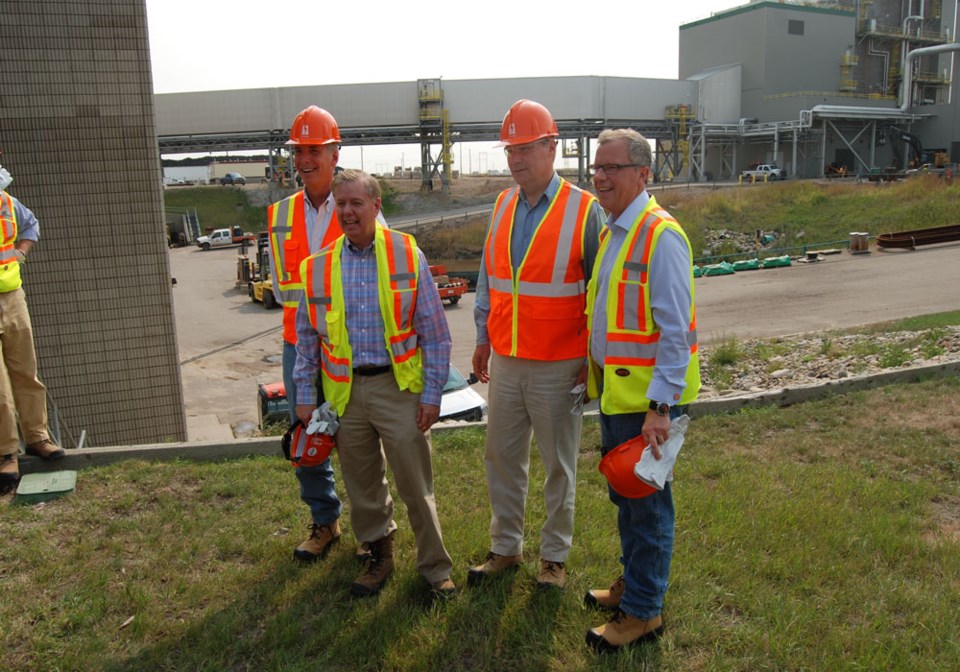**The following story is originally from this week's��С����Ƶeast Trader Express. Read next week's issue of the Mercury for a detailed recounting of the tours.
��
Boundary Dam was bustling with excitement on Wednesday as a U.S. presidential hopeful and several other political figures toured .
U.S. Sen. Lindsey Graham (Republican, С����Ƶ Carolina), Sen. Sheldon Whitehouse (Democrat, Rhode Island) along with Congressman Tom Rice (Republican, С����Ƶ Carolina) joined Premier Brad Wall for the tour.
“The Boundary Dam 3 project has technology which has worldwide application in the push for clean coal power sources and the mitigation of the effects of climate change,” Wall said in a press release.��“We’ve been promoting Saskatchewan expertise and this project globally and we welcome this opportunity to show Boundary Dam 3 to another group of American political leaders and influencers.
The premier noted this is Graham’s third visit to Saskatchewan but his first to Boundary Dam 3. The senator is a strong advocate of CCS and clean coal initiatives. Senator Whitehouse is a vocal proponent in Congress for action on climate change. Congressman Rice is a supporter of stronger partnerships with Canada and Mexico on energy infrastructure.
The two senators and congressman were accompanied by members of their staff and by Briana Reenshuler, Acting U.S. Consul General in Calgary.
In the U.S., coal accounts for about 39 per cent of U.S. electricity and has the world’s largest coal reserve. It’s also the world’s second-largest coal producer, second only behind China.
Critics have claimed the behind the carbon capture facility is costing electricity users about $1 billion, and that the technology itself, which has gained global attention, isn’t reducing the province’s greenhouse gas emissions as well as it should, as the carbon captured by BD3 amounts to less than of the province’s total GHG emissions.��In addition, Saskatchewan continues to have the highest per capita greenhouse gas emissions in the country, which experts have said will only go down with the implementation of more renewable sources of energy.




